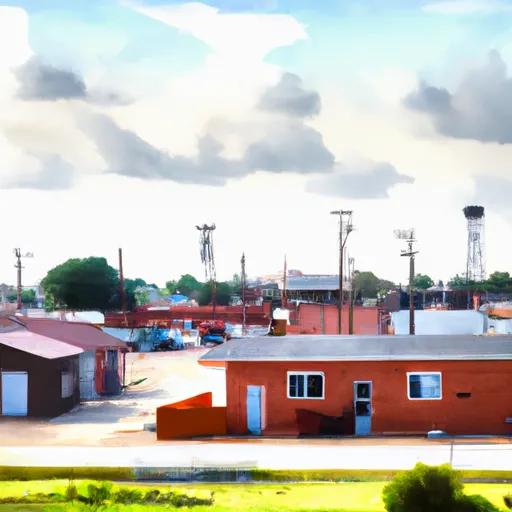-
 Snoflo Premium
Snoflo Premium
Get unlimited access to all our content
With no Ad interruptions! - Start Your Free Trial Login with existing account
Thicket
Eden Index
Climate
7.7
•
Recreation
0.7
•
Community
•
Safeguard
3.3/10

Thicket, Texas is a small rural community located in the southeastern part of the state. The climate in Thicket is characterized as humid subtropical, with hot, humid summers and mild winters. The average high temperature in summer is around 95°F (35°C), while winter temperatures range from 40°F to 60°F (4°C to 15°C).
Thicket benefits from a diverse hydrology system, with various constituents contributing to its water sources. The region is home to several rivers, including the Trinity River and its tributaries, which provide a steady water supply. Additionally, there are several lakes and ponds scattered throughout the area, offering opportunities for fishing, boating, and other water-related activities.
Outdoor recreation is a significant aspect of life in Thicket. The region is known for its beautiful natural landscapes, including forests and wildlife preserves. Hunting is a popular activity, with abundant game such as deer, hogs, and waterfowl. Thicket also boasts numerous hiking and biking trails, allowing visitors to explore and immerse themselves in the picturesque scenery. The local community often organizes events and festivals centered around outdoor activities, promoting a vibrant and active lifestyle for residents and visitors alike.
What is the Eden Index?
The Snoflo Eden Index serves as a comprehensive rating system for regions, evaluating their desirability through a holistic assessment of climate health, outdoor recreation opportunities, and natural disaster risk, acknowledging the profound impact of these factors on livability and well-being.
Climate Health Indicator (CHI): 7.7
Thicket receives approximately
1385mm of rain per year,
with humidity levels near 80%
and air temperatures averaging around
20°C.
Thicket has a plant hardyness factor of
8, meaning
plants and agriculture in this region tend to thrive here all year round.
By considering the ideal temperature range, reliable water supplies, clean air, and stable seasonal rain or snowpacks, the Climate Health Indicator (CHI) underscores the significance of a healthy climate as the foundation for quality living.
A healthy climate is paramount for ensuring a high quality of life and livability in a region, fostering both physical well-being and environmental harmony. This can be characterized by ideal temperatures, reliable access to water supplies, clean air, and consistent seasonal rain or snowpacks.
Weather Forecast
Streamflow Conditions
Neches
Area Rivers
Neches
Snowpack Depths
Neches
Reservoir Storage Capacity
Neches
Groundwater Levels
Recreational Opportunity Index (ROI): 0.7
The Recreational Opportunity Index (ROI) recognizes the value of outdoor recreational options, such as parks, hiking trails, camping sites, and fishing spots, while acknowledging that climate plays a pivotal role in ensuring the comfort and consistency of these experiences.
Access to outdoor recreational opportunities, encompassing activities such as parks, hiking, camping, and fishing, is crucial for overall well-being, and the climate plays a pivotal role in enabling and enhancing these experiences, ensuring that individuals can engage in nature-based activities comfortably and consistently.
Camping Areas
| Campground | Campsites | Reservations | Toilets | Showers | Elevation |
|---|---|---|---|---|---|
| White Memorial County Park | 15 | 28 ft | |||
| Hugo Point County Park | None | 28 ft | |||
| Double Bayou County Park | None | 11 ft | |||
| James H. Robbins Memorial Park | None | 3 ft | |||
| Rollover Pass | 40 | 3 ft | |||
| McCollum County Park | None | 27 ft | |||
| Job Beason County Park | None | 5 ft | |||
| Alabama - Coushatta Lake Tombigbee | 134 | 278 ft | |||
| Fort Anahuac County Park | None | 20 ft | |||
| Rosie Jones Park - Lake Murvaul | None | 286 ft |
Nearby Fishing
Catastrophe Safeguard Index (CSI):
The Catastrophe Safeguard Index (CSI) recognizes that natural disaster risk, encompassing floods, fires, hurricanes, and tornadoes, can drastically affect safety and the overall appeal of an area.
The level of natural disaster risk in a region significantly affects safety and the overall livability, with climate change amplifying these risks by potentially increasing the frequency and intensity of events like floods, fires, hurricanes, and tornadoes, thereby posing substantial challenges to community resilience and well-being.
Community Resilience Indicator (CRI):
The Community Resilience Indicator (CRI) recognizes that education, healthcare, and socioeconomics are crucial to the well-being of a region. The CRI acknowledges the profound impact of these elements on residents' overall quality of life. By evaluating educational resources, healthcare accessibility, and economic inclusivity, the index captures the essential aspects that contribute to a thriving community, fostering resident satisfaction, equity, and social cohesion.

